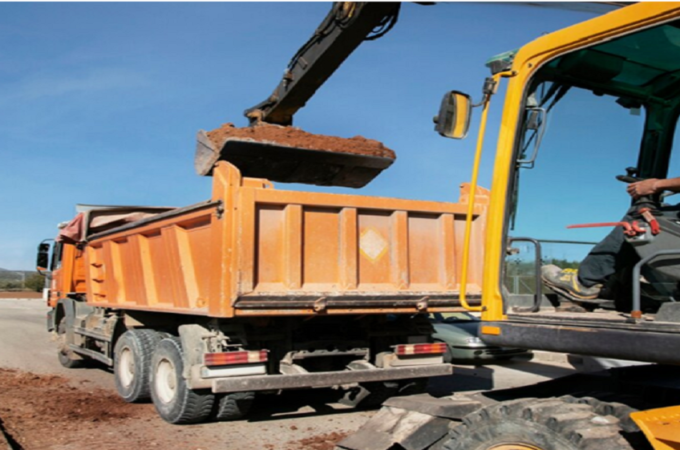
Guide to Buying a New Car in Another State
Purchasing a new car is always an exciting venture, and buying from another state can open up a world of options. It’s not uncommon to find better deals or specific models in states outside your own, especially if you’re looking for unique vehicles, better pricing, or access to limited inventories. While there are numerous benefits to broadening your search, buying a car in another state also comes with a few extra steps, such as registration, emissions testing, and figuring out how to get the vehicle home. This guide will walk you through everything you need to know about buying a car in another state, including tips on paperwork, potential costs, and using an auto transport company to bring your new vehicle to your door.
1. Researching State-Specific Requirements
When you buy a car in another state, it’s essential to understand the differences in registration, sales tax, and emissions standards between your state and the seller’s state. Start by researching your home state’s DMV requirements for out-of-state vehicle purchases. This often includes:
- Sales Tax: While some states don’t have sales tax, most do. Typically, you’ll pay the sales tax in your home state when you register the vehicle.
- Emissions and Safety Inspections: Certain states have stricter emissions standards or safety inspections than others. If your state has specific emissions requirements, make sure the car you’re buying meets these standards before purchasing.
- Temporary Tags and Registration: Many states offer temporary registration tags to allow you to drive the vehicle home or have it transported. Be sure to check the state’s rules for this.
2. Securing Financing and Negotiating the Deal
Securing financing is generally the same regardless of where you’re buying the car. You can obtain financing through your bank, credit union, or the dealership. It’s wise to shop around for the best interest rates and terms. When negotiating the deal, ensure you’re aware of any added fees, such as transportation or additional taxes, which may vary depending on the state.
3. Understanding Out-of-State Title Transfer
After purchasing the car, you’ll need to complete a title transfer. In most cases, you’ll handle the title transfer at your local DMV. However, it’s essential to check with the DMV in the seller’s state to confirm any requirements they may have. Be sure to have the following documents ready:
- The original title signed over to you
- A bill of sale indicating the purchase price and vehicle details
- Proof of insurance
- An odometer disclosure statement if required by your state
This paperwork ensures the car can be registered in your home state without issues.
4. Using an Auto Transport Company to Ship Your Vehicle
One of the biggest challenges of buying a car in another state is figuring out how to get it home, especially if the distance is substantial. In many cases, driving it back yourself may not be the most practical or cost-effective solution. This is where using an auto transport company can make the process much smoother. Auto transport companies specialize in moving vehicles across state lines, and they offer various services, including open transport (which is more economical) and enclosed transport (ideal for higher-end or classic cars).
Using an auto transport company offers several advantages. First, it saves time and energy—you won’t have to embark on a lengthy road trip to retrieve the vehicle. Second, it minimizes wear and tear on your new car, which is particularly valuable if you’re transporting a luxury or vintage vehicle. Be sure to get multiple quotes and read reviews to select a reputable transport company. Most companies will provide a tracking option, so you can monitor your car’s journey to its new home.
5. Preparing the Vehicle for Shipping
Before your car is shipped, it’s crucial to prepare it for transport. First, give the car a thorough cleaning so that you can easily spot any scratches, dents, or other damage that may occur during transit. Take photos of the car from multiple angles for documentation purposes. Remove all personal items and ensure the gas tank is filled to about a quarter to reduce the car’s weight. Review your chosen auto transport company’s specific instructions and policies to ensure your car is compliant with their requirements.
For a more detailed guide on preparing your vehicle and making sure the shipping process goes smoothly, you can refer to these car transport tips.
6. Registering Your Car in Your Home State
Once your new car arrives, you must register it in your home state. Most DMVs require proof of the title transfer, the bill of sale, emissions testing (if applicable), and insurance. Be prepared to pay registration fees and any applicable sales tax. Some states also require a VIN inspection for out-of-state purchases, which can often be done at the DMV or by an authorized inspector.
7. Final Thoughts
Buying a car from another state can be straightforward if you’re prepared for the additional steps involved. Understanding the differences in state regulations, preparing the necessary paperwork, and considering options for auto transport can make the entire experience smoother and more enjoyable. When done right, buying out of state opens up a world of options that might not be available locally, giving you access to a broader range of vehicles and potentially better deals.
With careful planning and a reputable auto transport company, bringing a car from another state to your driveway can be a hassle-free process. This allows you to focus on the excitement of driving your new purchase rather than the logistics.




